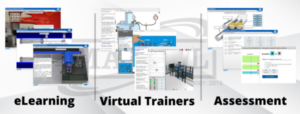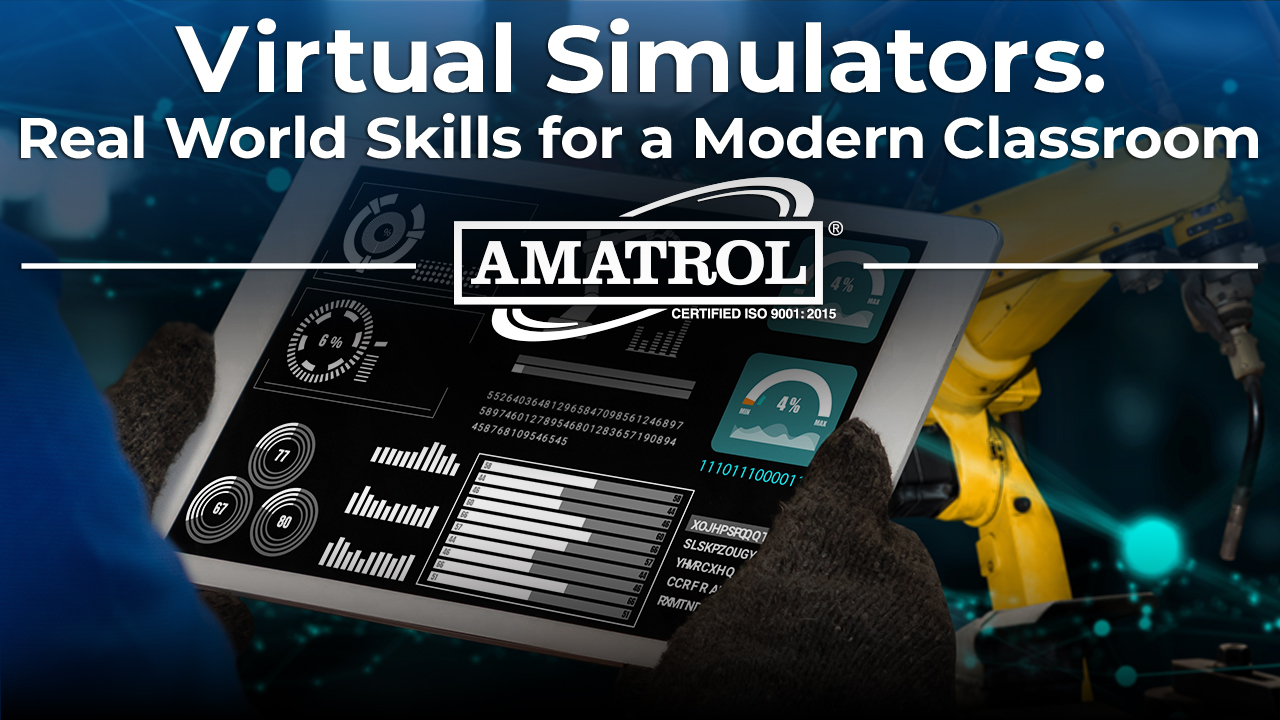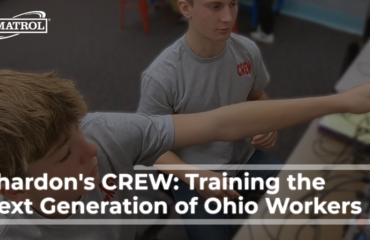Virtual simulator is a common term used to define everything from aircraft flight simulators to interactive games. In manufacturing training, virtual simulators refer to interactive software that closely mimics the operation of machines, tools, or systems. They imitate their real-world counterparts to such a close degree that they allow the transfer of real-world skills. While simulators may never completely remove the need for hands-on training, they provide some valuable benefits in the classroom or wherever needed.
Virtual Simulator Benefits
- Inexpensive way to increase training resources
- Reduces time spent on physical equipment
- Increases safety & reduces damaged equipment expenses
- Provides remote training access
Inexpensive way to increase training resources
Training equipment that uses real-world components can be expensive when trying to equip an entire classroom. It is typically not practical to provide a piece of training equipment for each person in the course. Many times, learners may work in pairs to stretch access to the hands-on training equipment. However, there may still be learners waiting for their turn. Virtual simulators fill the gaps and allow training to continue until the physical systems become available.
Reduces time spent on the equipment
Many manufacturing machines and tools have specific procedures that must be followed to operate properly, such as homing a CNC machine before running a program. Practicing these procedures on a virtual simulator is a great way to master them. When it’s their turn on the actual training equipment, they already have these procedures in their skill set. This reduces time spent learning this skill on the real system and increases time available on the equipment for other learners.
Increases safety & reduces damaged equipment expenses
Mistakes are an unavoidable part of the learning process and should be anticipated in any learning process. These mistakes show students the outcomes of their actions in a safe environment while teaching them what to avoid and equipment limitations. A traditional learning environment can make the smallest errors seem catastrophic, and this could be why 95% of students are intimidated by making a mistake in the classroom according to a Taiqin study. Students can now experiment with real world scenarios knowing that the threat of damaging equipment, fear of personal injury, or embarrassment has disappeared thanks to virtual learning.
Instructors strive to create a safe environment for their students, but at some point, students need to put hands on the real-world equipment to verify their new skills. Virtual simulators reduce the risk by allowing initial mistakes to be done in a virtual environment. Students see the results of their actions without damaging real equipment or harming themselves. Even small expenses such as replacing fuses or broken tooling adds up over time.
Provides remote training access
Remote access to training is essential in today’s fast paced world where learners need to be able to access their training on their schedule. Virtual simulators allow them to train before planning to visit the training facility and use the physical training equipment. Having practiced in the virtual environment allows them to make the most of their valuable time.

Amatrol’s Virtual Simulators
While virtual simulators may never completely remove the need for hands-on training, the real-world applications and flexibility of virtual simulators allow learners the opportunity to develop skills useful in today’s fast paced manufacturing environment. With over 30 years of experience, Amatrol’s virtual simulators are designed to replicate hands-on training using real-world tasks and procedures giving students the confidence and familiarity to transfer their knowledge into a successful career in manufacturing.
Visit Amatrol today and connect with an expert to learn more about virtual simulators and other hands-on learning opportunities.





